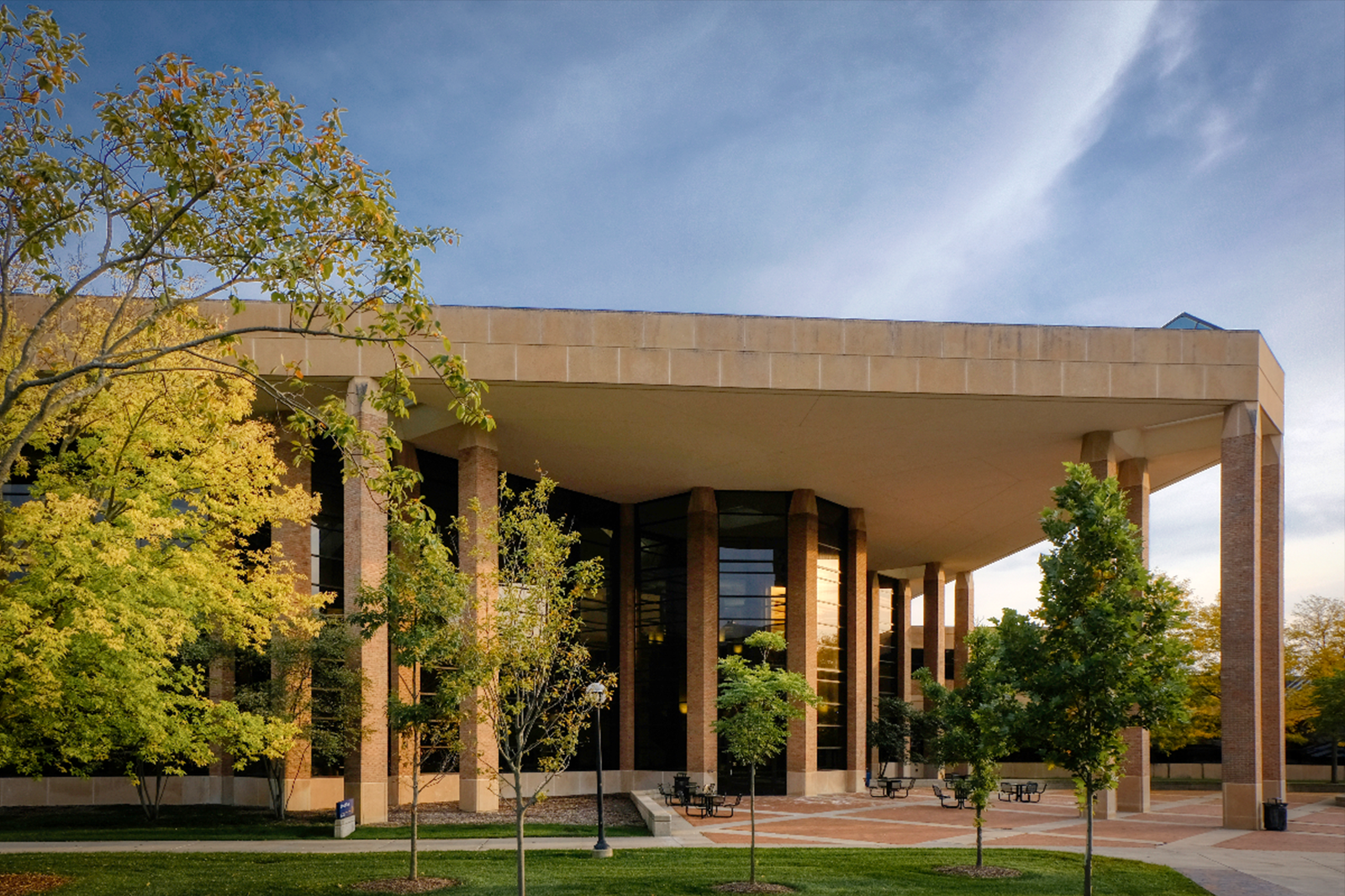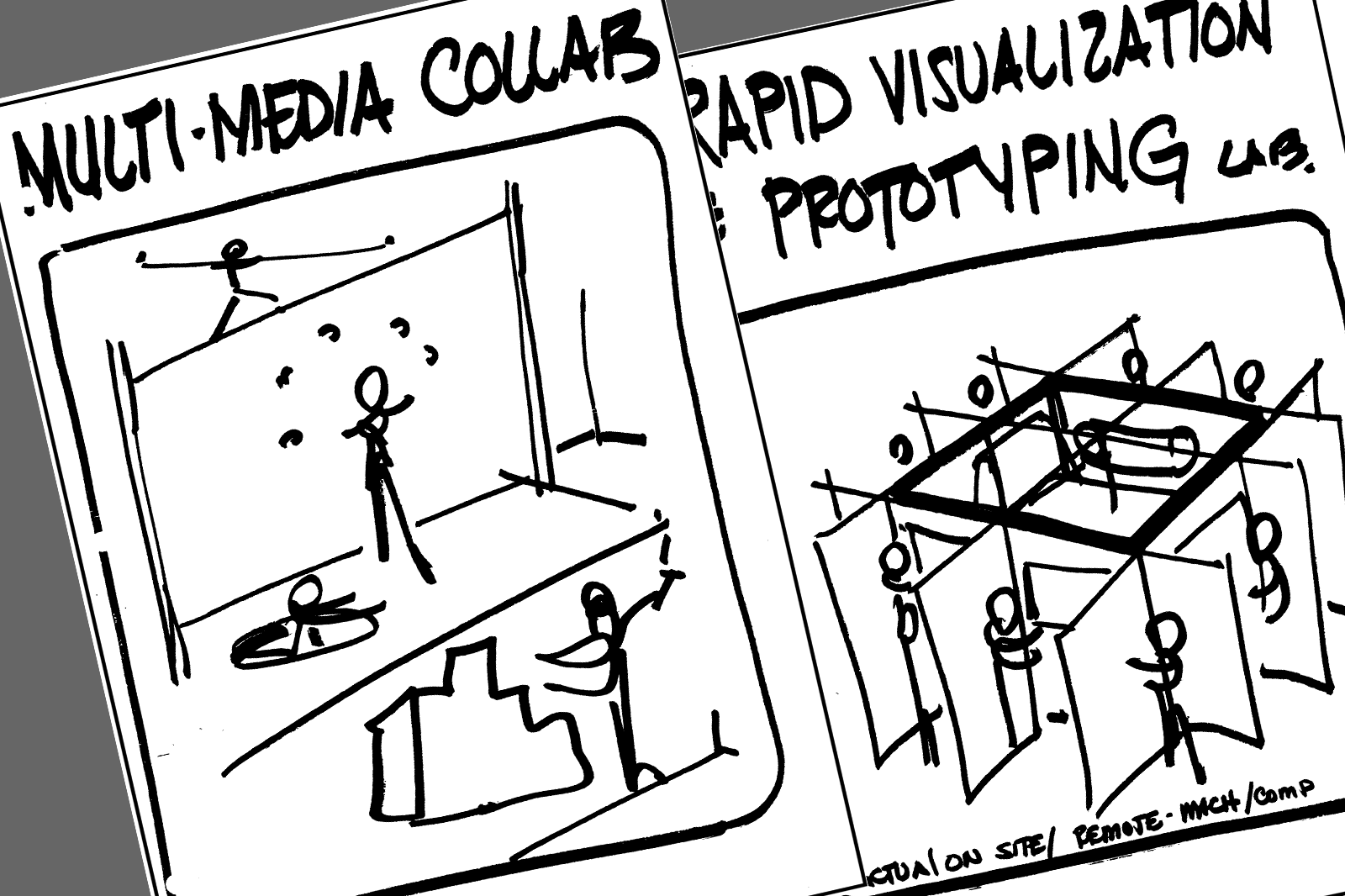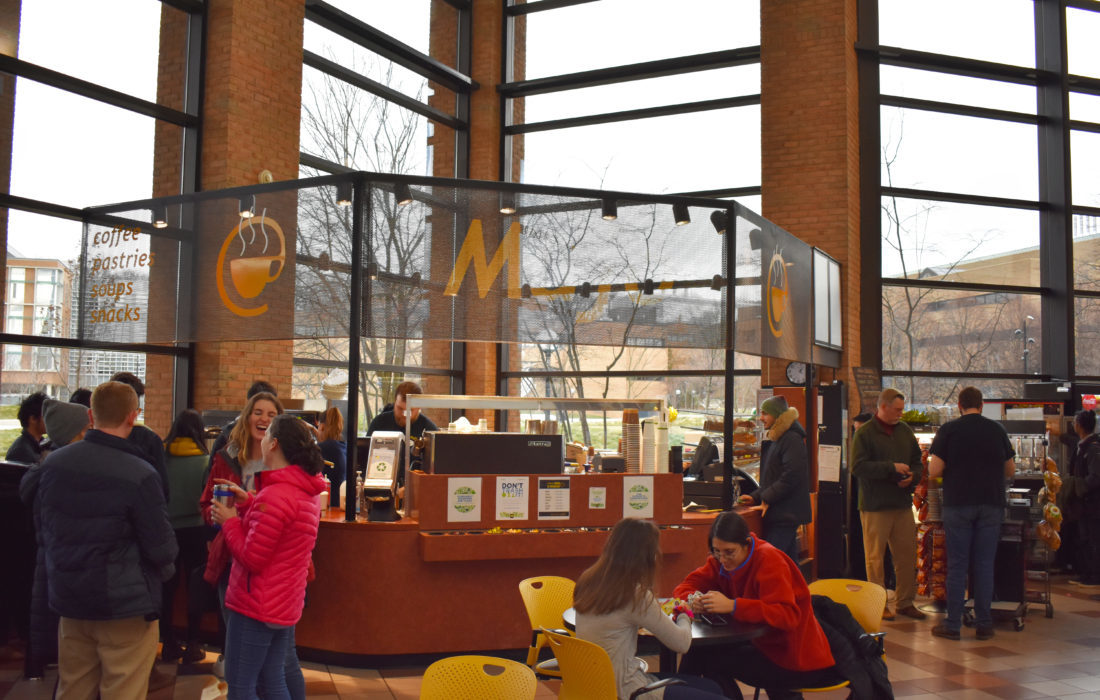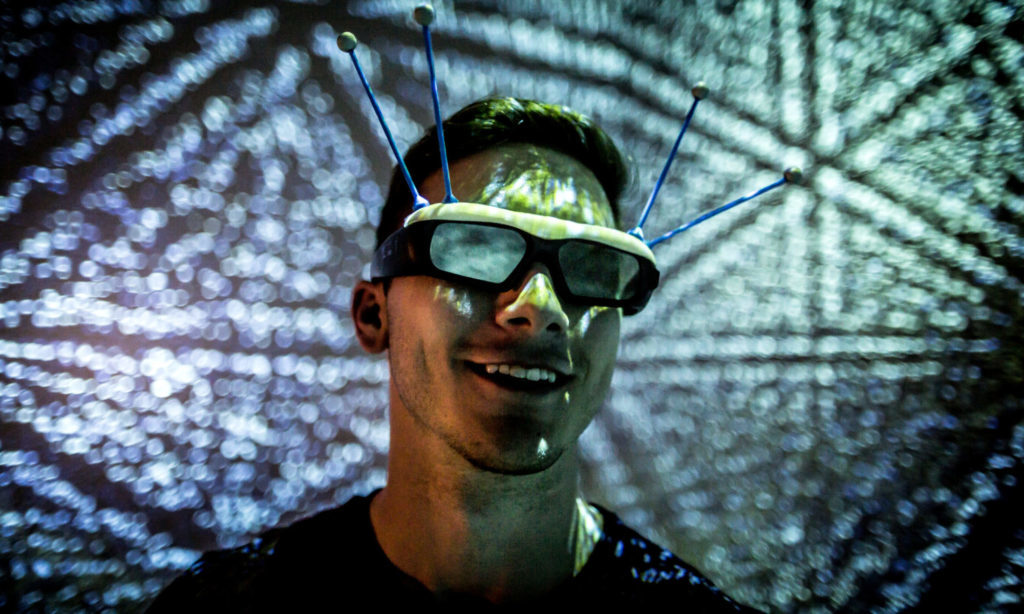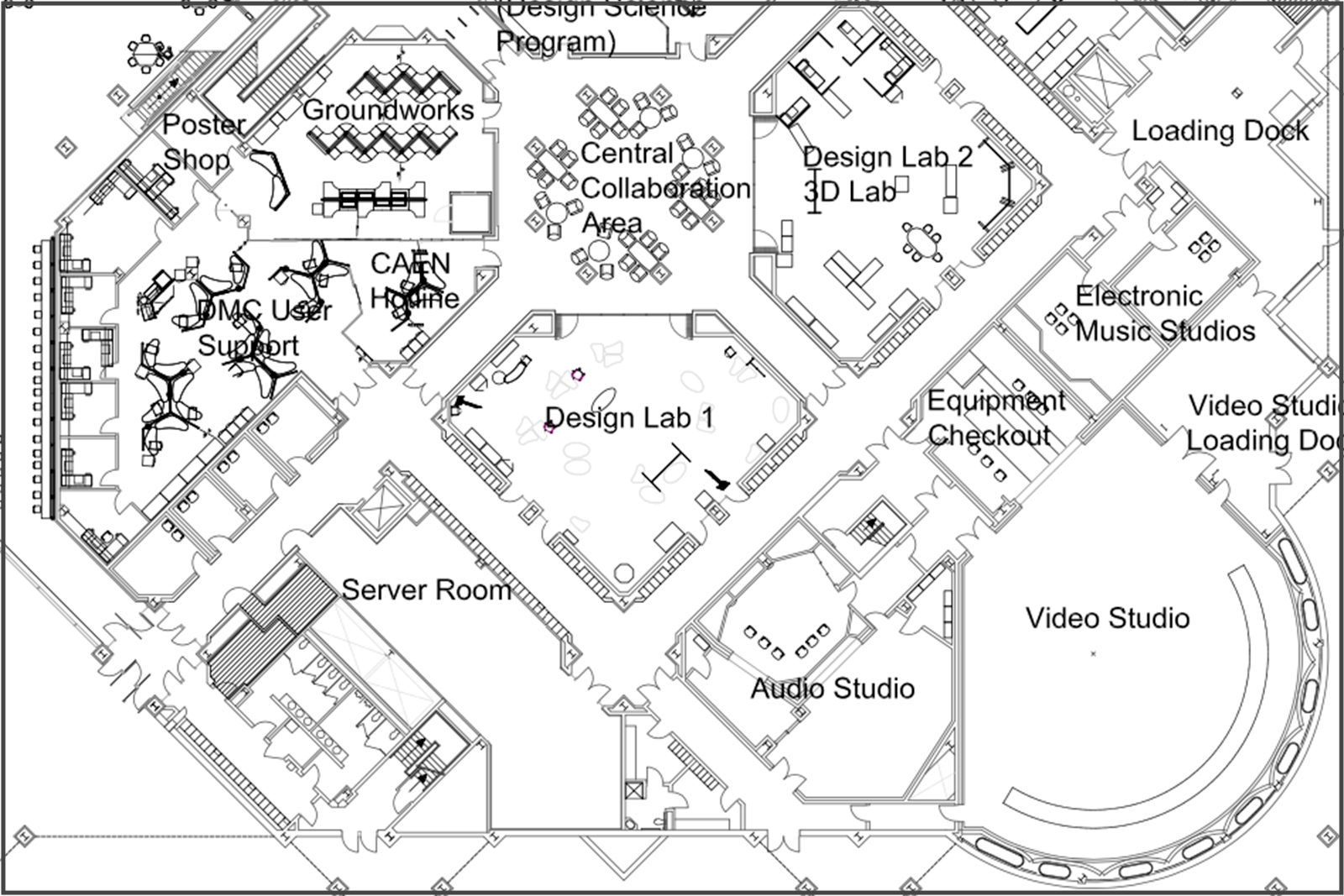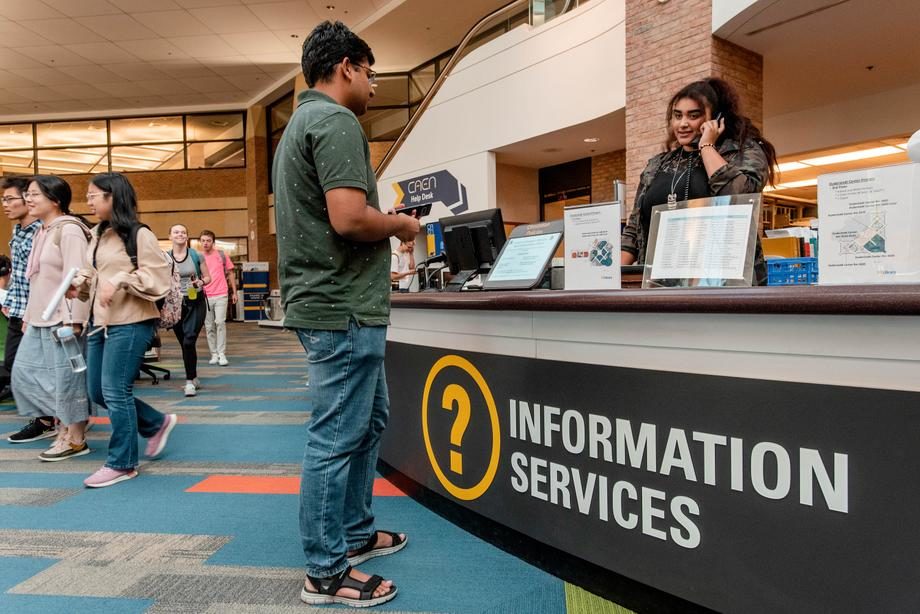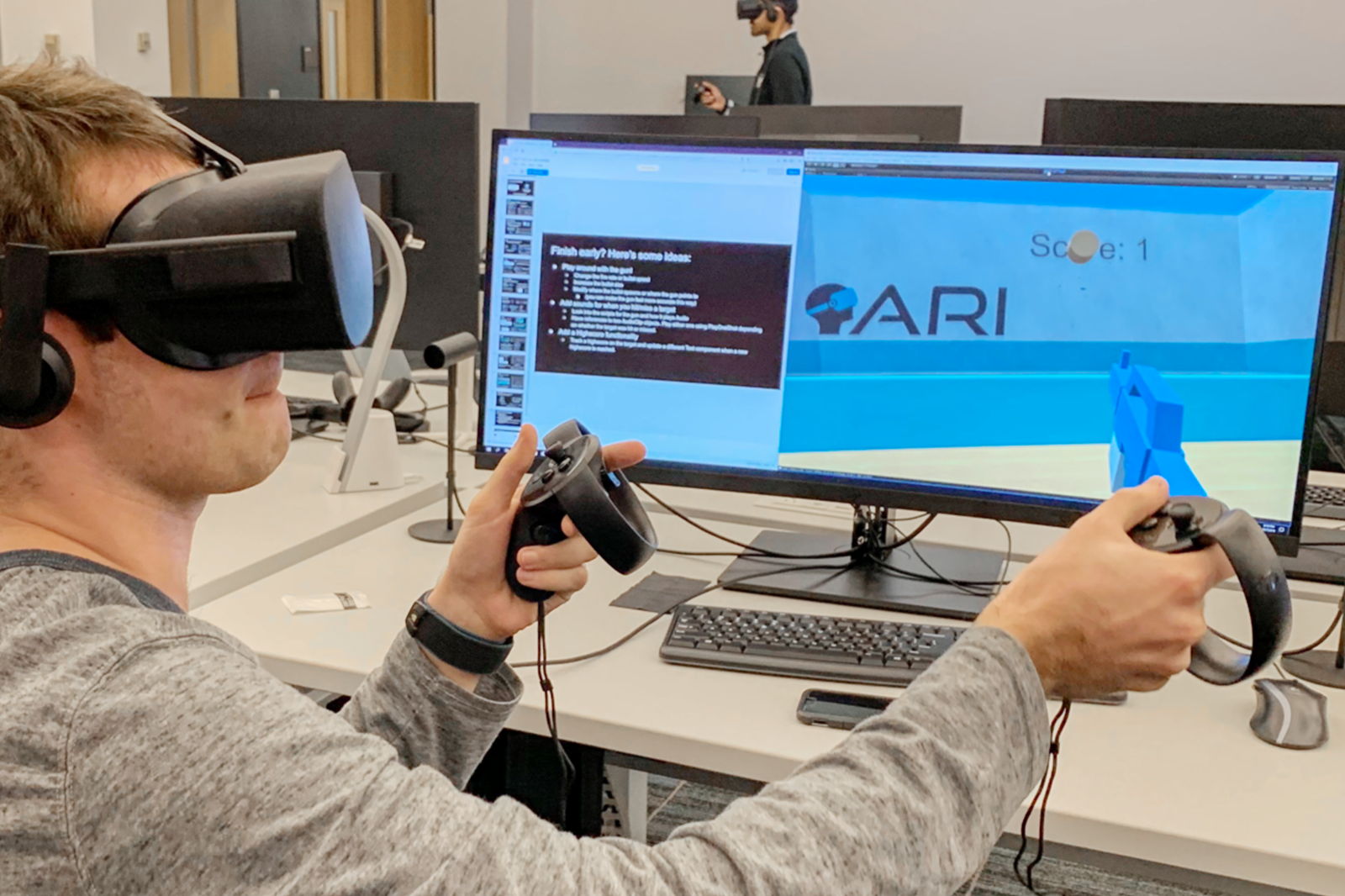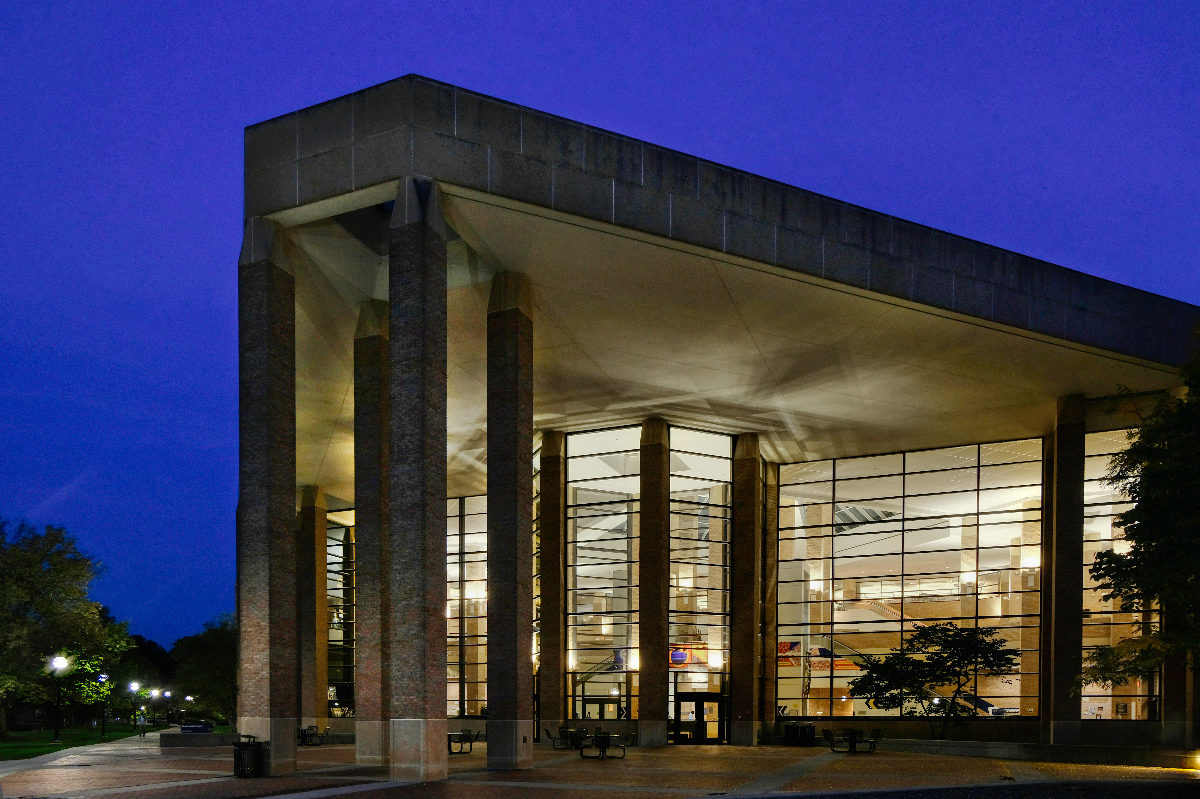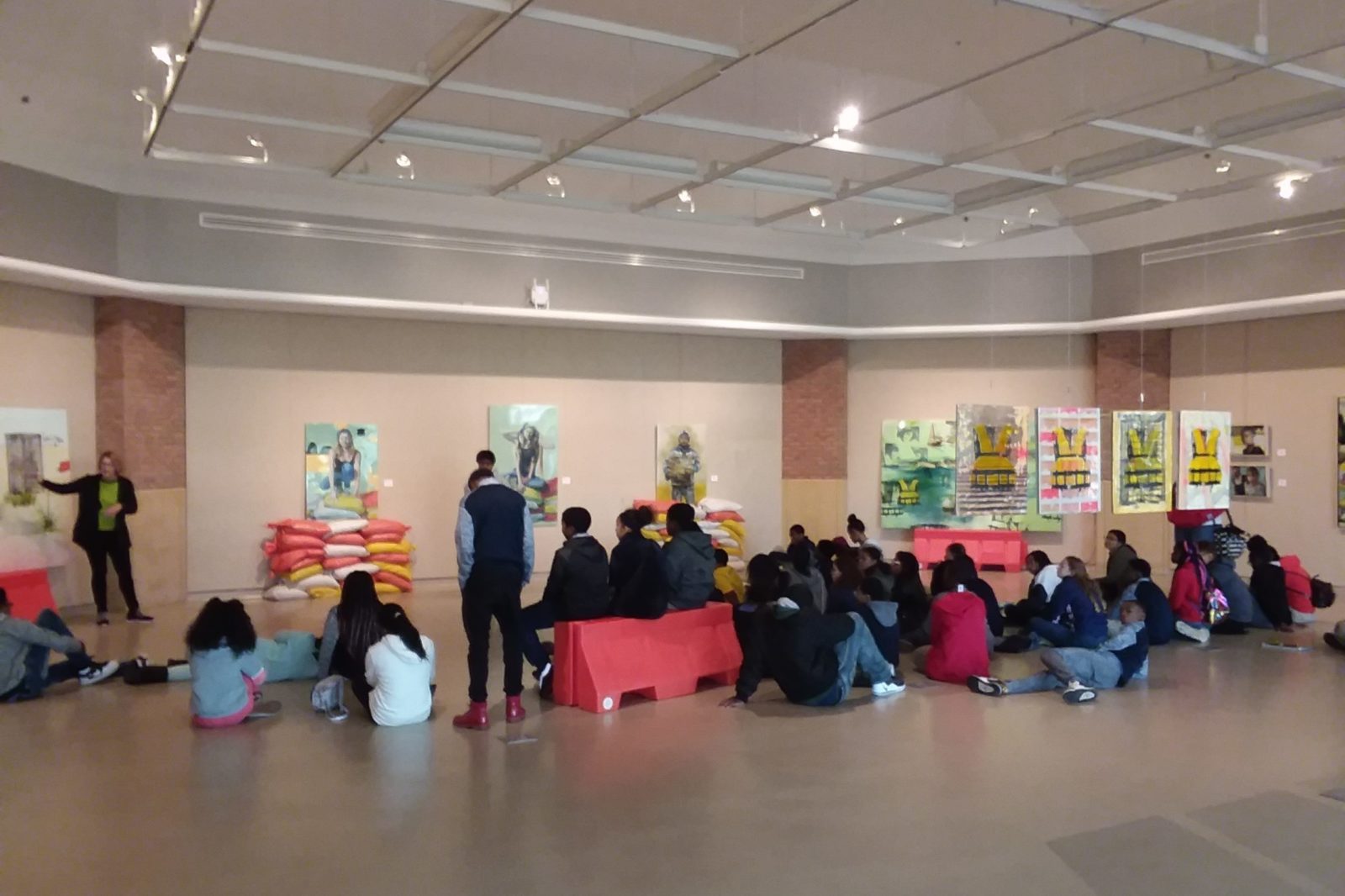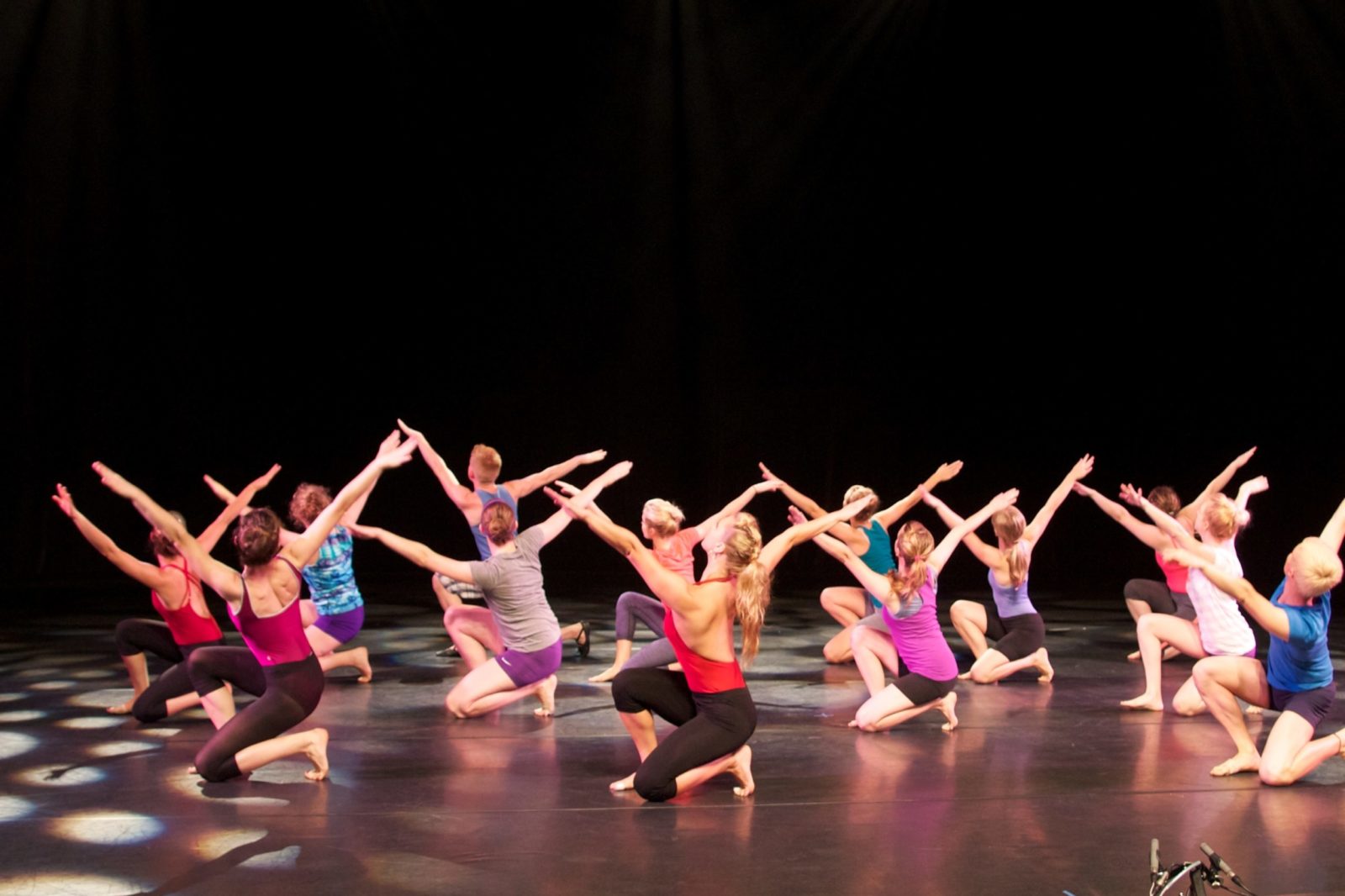The Duderstadt Center is a place like no other for you to engage, collaborate, and create with the people, advanced technologies, and unique spaces to build your academic and career future.
What is the Duderstadt Center?
The James and Anne Duderstadt Center (DC) is an ecosystem for creativity and innovation that enables you to engage, hands-on with more than $5 million in advanced digital-media creative resources and information technologies, collaborate with peers and expand the vision for your academic and career future. It’s been said, “If you can imagine it, you can make it happen here!” For just a hint at the possibilities, take our online mini-tour ▶
From the beginning, the DC has provided open access for anyone in the U-M community to the newest generations of information technology and digital media tools, expert support, and collaborative spaces for research and creative work. Access to costly and complex resources, and the training to use them, is available without cost.
While many of the resources of the Duderstadt Center are tailored to the curricula of the North Campus schools and colleges (architecture, the visual and performing arts, engineering and information science), they are available to students, faculty, and staff regardless of their U-M unit affiliation.
For more on how the Duderstadt Center came to be, and the central role it has played in the development of the North Campus schools and colleges, see The History of The Duderstadt Center ▶
To Top of Page
Who is the Duderstadt Center named for?
The full name of the DC is The James and Anne Duderstadt Center. Dr. James J. Duderstadt served as the president of the University of Michigan from 1988-1996, at a time of significant change as the university explored the application of digital technologies in all aspects of the university’s learning, teaching and research mission. In collaboration with the North Camps deans, Dr. Duderstadt was instrumental in realizing both the facility and its unique resources.
Throughout their careers, James and Anne Duderstadt have shared a deep partnership in their service to the U-M, as well as in national and international programs advancing higher education. Including both James and Anne Duderstadt in the name of the center reflects the U-M’s deep appreciation for their shared contributions.
What is the connection between the DC and the Media Union?
When this unique facility first opened its doors it was known as the Media Union; a hub of academic resources and student activities on the North Campus, echoing the role of the Michigan Union on the U-M Central Campus. The deans of the North Campus schools and colleges also wanted to emphasize the advanced information technology, networks, and rich digital media resources of the center tailored especially to their disciplines and accessible to all students and faculty. Hence “Media” Union. You will still hear long-time campus dwellers refer to it as the Media Union.
To Top of Page
Who runs the DC?
The advanced resources and unique role of the Duderstadt Center reflect a deep collaboration among many campus units that contribute to its success.
The facility, operating budget, core staffing, and investments in new technologies, building renovation, and services are provided by the Office of the Provost.
An Executive Committee of the North Campus Deans works with the Provost to shape the vision and priorities for the Duderstadt Center as a core resource with a special focus on the requirements of the NC curriculums. They gather input from students, faculty, and the staff of the partner organizations to help guide both near and long-term planning.
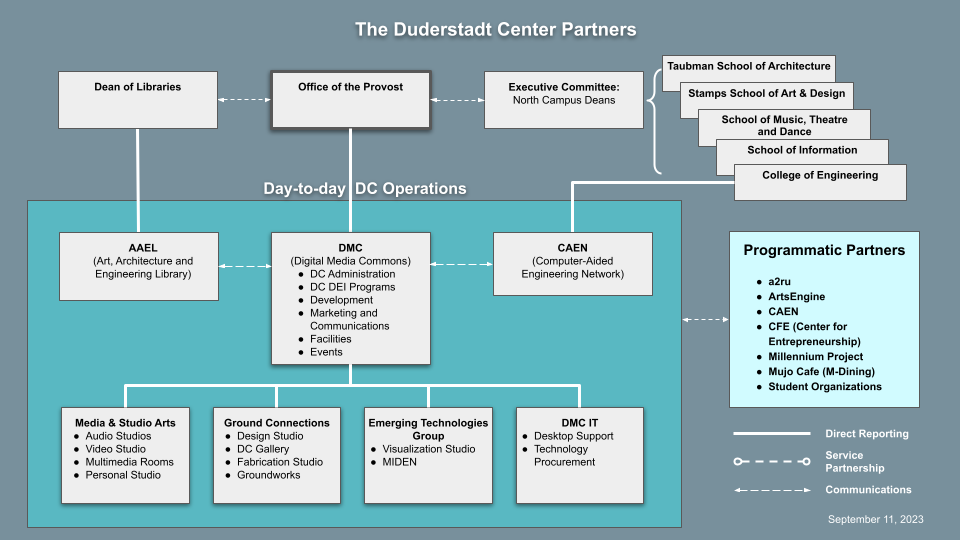
The Duderstadt Center is a partnership led by the Office of the Vice Provost for Academic Innovation and its staff, in collaboration with the Deans of the North Campus Schools and Colleges.
Click here for a scalable, detailed organization chart of just the Digital Media Commons:
To Top of Page
What is the DMC; is there a difference between the DMC and the DC?
The Digital Media Commons (DMC) is a unit of the Office of the Provost with direct reporting responsibility for the overall operations of the Duderstadt Center. The DMC’s role is one of stewardship, helping to coordinate the services provided by multiple partner organizations, and to see that the Duderstadt Center’s resources reflect the priorities of the DC’s Executive Committee and the Office of the Provost for serving the academic community.
The Digital Media Commons staff also provide specialist expertise to support the technologies, spaces, and curricular programs of the advanced digital media resources and studios in the DC. The DMC staff are organized in these services.
- Administration
- budget, operations management and procurement
- DEI activities, including convening the committee drawn from multiple DC-building partners to initiate and support education, funding, and management of diversity, equity and inclusion projects and activities throughout the facility and its programs
- development
- facilities management
- events and scheduling operations
- marketing and communications
- Emerging Technologies Group
- support of 3D visualization technology infrastructure and services
- operations of the Visualization Studio, MiDen and MoCap 3D environments
- provides consultation, instruction and workshops on application of 3D visualization technologies in research projects, course design and student projects
- applications development
- partner with other campus units to expand the role of 3D and XR technologies across U-M teaching, learning, and research practices.
- Ground Connections
- supports faculty and students in discovery and integration of the DC’s unique technologies and collaborative spaces into courses and learning experiences
- promotes and coordinates joint programs between DC partner organizations
- creates learning and employment opportunities for students with consultation, instruction, and mentoring programs in cooperation with ETG and MSA teams.
- operations of the Design Studios 1 & 2, Fabrication Underground, DC Gallery, CCA Gallery and Groundworks
- Media and Studio Arts
- design, operation and technology integration of advanced digital media technologies and studios to serve the creative and performing arts, with a special focus on those programs in the North Campus schools
- consulting for faculty and students in course content, media integration and publication of performance-based productions
- operations of Audio Studios, Multimedia Rooms, the Personal Studio and the Video Studio
The staff of the DMC share in the day-to-day operation of the DC with the staff of CAEN and the AAEL.
To Top of Page
What is CAEN?
The Computer-Aided Engineering Network (CAEN) is the College of Engineering’s IT services organization. The CAEN staff were deeply engaged in the early development of what is now the Duderstadt Center before the DC was organized as part of the Office of the Provost. CAEN provides computing, instructional, and information technologies for the College of Engineering, and replicates these services in the DC. CAEN provides the extensive Windows and Linux software environment available on hundreds of computers in the Duderstadt Center. CAEN staff expertise has also helped shape the DC’s network infrastructure, computing environment, and unique study spaces throughout the facility. Many CAEN staff have their offices in the DC.
To Top of Page
What is the AAEL?
The Art, Architecture and Engineering Library (AAEL) has its home in the Duderstadt Center, but there are many organizations in the DC community in addition to this special library. Along with the DMC and CAEN, AAEL is one of the three partner units that manage the DC’s operations. The AAEL is part of the larger U-M Library system. It curates many unique collections and provides services essential to the academic programs of the North Campus schools and colleges. AAEL Librarians and staff have offices in the DC.
